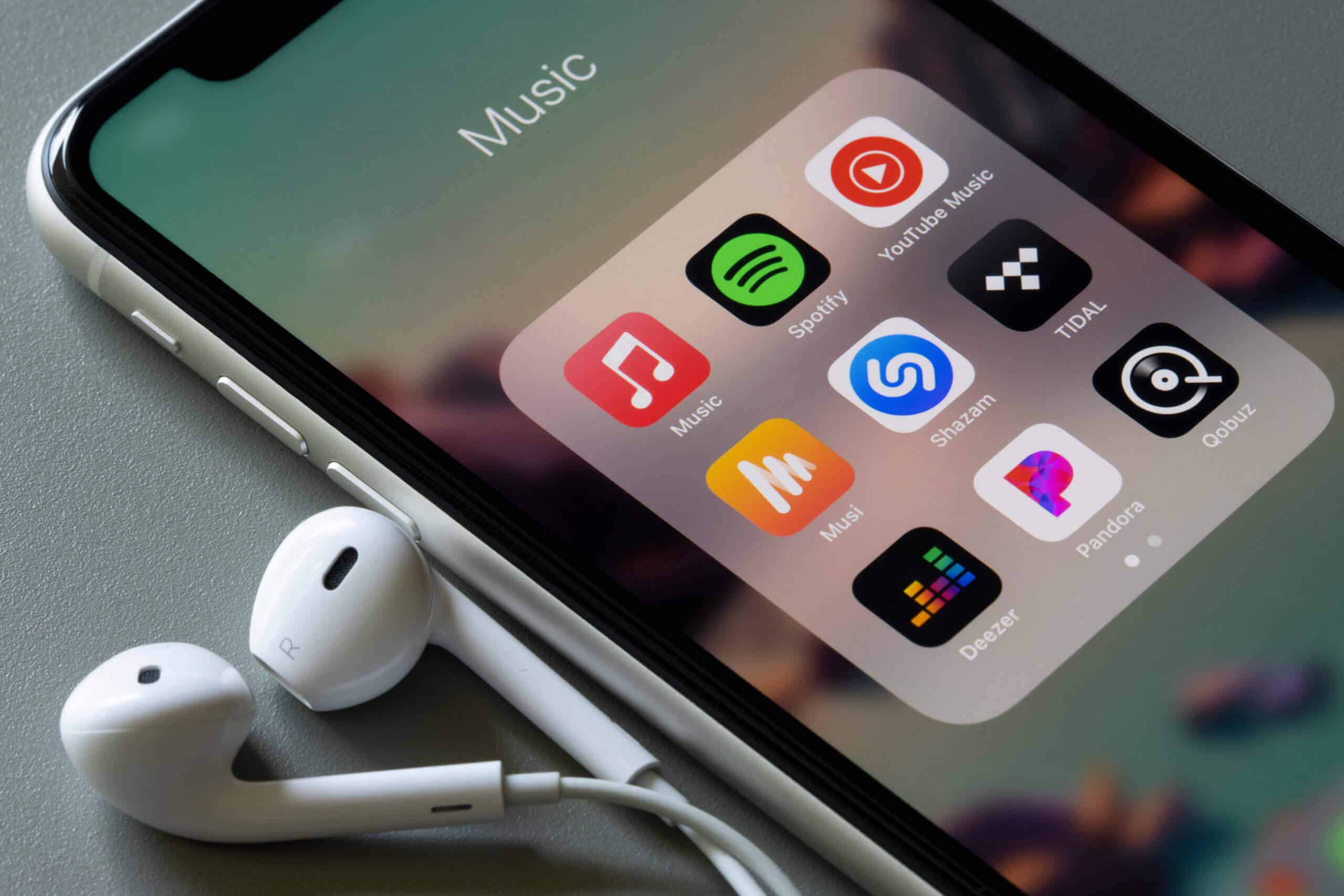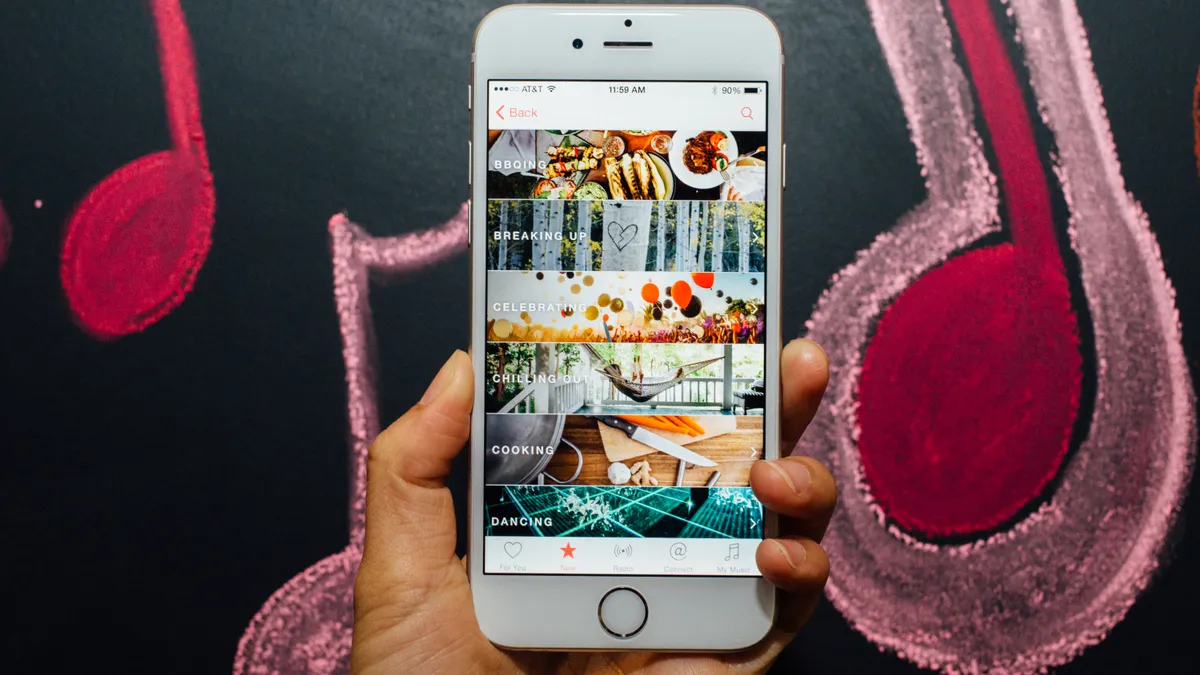Home>Devices & Equipment>Streaming>How Do Artists Get Paid From Music Streaming


Streaming
How Do Artists Get Paid From Music Streaming
Published: March 7, 2024
Learn how artists make money from music streaming services. Discover the different ways streaming platforms pay artists and how it impacts their earnings. Gain insights into the streaming revenue model.
(Many of the links in this article redirect to a specific reviewed product. Your purchase of these products through affiliate links helps to generate commission for AudioLover.com, at no extra cost. Learn more)
Table of Contents
Introduction
The music industry has undergone a significant transformation with the advent of digital streaming platforms. In the past, artists relied heavily on album sales and live performances as their primary sources of income. However, the rise of streaming services has revolutionized the way music is consumed, presenting both opportunities and challenges for artists seeking to monetize their work.
Streaming platforms such as Spotify, Apple Music, and Amazon Music have become the go-to destinations for music enthusiasts, offering a vast library of songs accessible at the touch of a button. This shift in consumer behavior has reshaped the revenue landscape for artists, prompting them to adapt to new payment models and marketing strategies.
As the music streaming industry continues to evolve, it's crucial to understand how artists are compensated for their creative endeavors in this digital era. From royalties and payment structures to the impact of streaming on artists' income, this article will delve into the intricacies of how artists get paid from music streaming and explore alternative revenue streams that have emerged in response to these changes.
Revenue from Streaming Platforms
The revenue generated from music streaming platforms is a pivotal aspect of the modern music industry. These platforms operate on a subscription-based or ad-supported model, allowing users to access a vast catalog of songs, albums, and playlists. The revenue generated from streaming is primarily derived from subscription fees, advertising, and partnerships with other companies.
Streaming platforms typically offer two types of subscriptions: premium and ad-supported. Premium subscribers pay a monthly fee for ad-free access to the platform's entire music library, while ad-supported users can access the content for free but are subjected to periodic advertisements. The revenue generated from premium subscriptions forms a substantial portion of the overall income for streaming platforms.
In addition to subscription fees, streaming platforms earn revenue through advertising. Ad-supported tiers feature periodic commercials that provide a source of income for the platform. Furthermore, streaming services often form partnerships with brands and companies to promote products or sponsor exclusive content, adding another layer of revenue generation.
The revenue earned by streaming platforms is distributed among various stakeholders, including record labels, music publishers, and, of course, the artists themselves. The intricate process of revenue allocation involves factors such as the number of streams, user engagement, and the terms of the licensing agreements between the platform and the rights holders.
It's important to note that the revenue from streaming platforms is not solely dependent on the number of streams. Factors such as user retention, playlist placements, and geographical distribution also play a significant role in determining the overall revenue. As a result, artists and rights holders receive compensation based on a complex formula that takes into account these variables.
In recent years, streaming platforms have become the primary source of revenue for the music industry, surpassing physical sales and digital downloads. This shift has prompted artists to adapt their marketing and promotional strategies to maximize their earnings from streaming. Understanding the dynamics of revenue generation on these platforms is crucial for artists seeking to navigate the evolving landscape of the music business.
Overall, the revenue from streaming platforms represents a fundamental pillar of the modern music industry, shaping the way artists monetize their creative output and interact with their audience in the digital age.
Royalties and Payment Structure
The royalties and payment structure in the music streaming industry are complex and multifaceted, encompassing various elements that determine how artists are compensated for their music. Understanding the intricacies of royalties and payment distribution is crucial for artists seeking to maximize their earnings from streaming platforms.
One of the primary components of the payment structure is the concept of royalties. When a song is streamed on a platform, the rights holders, including the artists, songwriters, and music publishers, are entitled to receive royalties. These royalties are calculated based on the number of streams, with the precise amount varying depending on the platform's payment model and the terms of the licensing agreements.
Streaming platforms typically use a pro-rata model to distribute royalties, wherein the total revenue generated from subscriptions and advertising is divided among rights holders based on the proportion of streams their music receives. This means that the more a song is streamed, the larger the share of royalties the rights holders will receive. However, this model also means that the overall revenue pool is divided among a vast catalog of music, potentially resulting in modest payouts for individual artists, especially those with smaller audiences.
Furthermore, the payment structure for royalties is influenced by the type of subscription, as premium subscribers generally yield higher royalties compared to ad-supported users. Additionally, the geographical location of the streams and the specific terms outlined in the licensing agreements can impact the amount of royalties received by artists.
In recent years, there has been ongoing debate and scrutiny regarding the fairness of royalty distribution on streaming platforms. Some artists and industry professionals have raised concerns about the transparency of payment calculations and the equitable distribution of revenue. This has led to discussions about potential reforms in royalty structures to ensure that artists receive fair compensation for their work.
Moreover, the emergence of digital rights management organizations and royalty collection agencies has played a pivotal role in streamlining the process of royalty collection and distribution for artists. These entities work to monitor and collect royalties on behalf of rights holders, ensuring that artists receive their rightful share of the streaming revenue.
In essence, the royalties and payment structure in the music streaming industry are intricate and dynamic, reflecting the evolving nature of digital music consumption. As artists navigate this landscape, understanding the nuances of royalty calculations and payment distribution is essential for optimizing their earnings and advocating for equitable compensation within the streaming ecosystem.
Impact of Streaming on Artists' Income
The advent of music streaming has significantly reshaped the income landscape for artists, presenting both opportunities and challenges in the digital era. While streaming platforms offer unprecedented access to a global audience, the impact on artists' income is a topic of ongoing discussion within the music industry.
Streaming has fundamentally altered the revenue streams for artists, with both positive and negative implications. On the positive side, streaming platforms have the potential to amplify an artist's reach, enabling their music to reach a vast and diverse audience on a global scale. This expanded exposure can lead to increased fan engagement, brand recognition, and opportunities for live performances and merchandise sales, ultimately contributing to a diversified income portfolio.
However, the shift from physical sales and digital downloads to streaming has also raised concerns about the overall income generated for artists. The pro-rata model used by many streaming platforms to distribute royalties means that individual artists may receive modest payouts, particularly if their music competes within a vast catalog of songs. This has prompted discussions about the fairness of royalty distribution and the need for greater transparency in payment calculations.
Furthermore, the transition to streaming has altered consumer behavior, impacting traditional revenue sources such as album sales and downloads. As a result, artists have had to adapt their business models and marketing strategies to align with the new paradigm of music consumption. This shift has prompted a reevaluation of income streams, leading artists to explore alternative revenue sources such as sync licensing, brand partnerships, and direct-to-fan engagement through platforms like Patreon and Bandcamp.
The impact of streaming on artists' income extends beyond royalty payments, influencing their overall financial stability and career sustainability. As artists navigate this evolving landscape, there is a growing emphasis on advocating for fair compensation and equitable treatment within the streaming ecosystem. This includes discussions about royalty reform, greater transparency in payment structures, and the establishment of industry standards to ensure that artists receive a fair share of the streaming revenue.
In essence, the impact of streaming on artists' income is a multifaceted phenomenon that has redefined the dynamics of revenue generation in the music industry. While streaming offers unprecedented access to a global audience, it also presents challenges related to income distribution and financial viability for individual artists. As the music business continues to evolve, addressing these challenges and advocating for equitable compensation remains a crucial priority for artists and industry stakeholders alike.
Alternative Revenue Streams for Artists
In response to the evolving landscape of the music industry, artists have increasingly turned to alternative revenue streams to supplement their income and diversify their financial portfolio. These alternative avenues offer artists the opportunity to harness their creativity and entrepreneurial spirit while forging direct connections with their fan base. Here are some prominent alternative revenue streams that have gained traction in the digital age:
-
Sync Licensing: Sync licensing has emerged as a lucrative avenue for artists to showcase their music in various media productions, including films, TV shows, commercials, and video games. By licensing their music for synchronization with visual content, artists can tap into new revenue streams while gaining exposure to broader audiences.
-
Merchandise and Branded Products: The sale of merchandise, including apparel, accessories, and specialty items, has become a significant source of revenue for artists. Additionally, collaborating with brands to create co-branded products and limited-edition releases presents an opportunity for artists to expand their reach and engage with fans in innovative ways.
-
Live Performances and Touring: While live performances have historically been a primary source of income for artists, the digital age has seen a resurgence in the value of touring and live experiences. Artists can leverage their fan base to create intimate and exclusive live events, offering VIP experiences and behind-the-scenes access to generate additional revenue.
-
Direct-to-Fan Platforms: Platforms such as Patreon, Bandcamp, and Kickstarter have empowered artists to connect directly with their supporters, offering exclusive content, personalized experiences, and crowdfunding opportunities. This direct-to-fan approach fosters a sense of community and allows artists to cultivate a loyal and supportive fan base.
-
Brand Partnerships and Endorsements: Collaborating with brands and companies for endorsements, sponsorships, and product placements presents artists with opportunities to diversify their income while aligning with brands that resonate with their artistic vision and values.
-
Digital Content Creation: With the rise of digital platforms and social media, artists can create and monetize digital content such as tutorials, behind-the-scenes footage, and exclusive releases. This approach not only generates additional income but also provides fans with unique insights into the creative process.
By embracing these alternative revenue streams, artists can adapt to the changing dynamics of the music industry while fostering sustainable and diversified income sources. These avenues not only contribute to financial stability but also enable artists to forge deeper connections with their audience, ultimately enriching the artistic experience for both creators and fans alike.
Conclusion
In conclusion, the landscape of music streaming has ushered in a new era of opportunities and challenges for artists seeking to monetize their creative endeavors. The shift from traditional revenue sources to digital streaming platforms has fundamentally transformed the dynamics of income generation in the music industry. While streaming offers unprecedented access to a global audience and the potential for expanded exposure, it has also raised concerns about the equitable distribution of royalties and the overall financial stability of individual artists.
The revenue from streaming platforms, derived from subscription fees, advertising, and partnerships, represents a fundamental pillar of the modern music industry. However, the complex pro-rata model used to distribute royalties has prompted discussions about the fairness of payment structures and the need for greater transparency in royalty calculations. As artists navigate this landscape, understanding the intricacies of royalties and payment distribution is essential for optimizing their earnings and advocating for equitable compensation within the streaming ecosystem.
Moreover, the impact of streaming on artists' income extends beyond royalty payments, influencing their overall financial stability and career sustainability. The transition to streaming has prompted a reevaluation of income streams, leading artists to explore alternative avenues such as sync licensing, merchandise sales, live performances, direct-to-fan engagement, and brand partnerships. These alternative revenue streams offer artists the opportunity to diversify their income and forge direct connections with their fan base, enriching the artistic experience while fostering financial stability.
As the music business continues to evolve, addressing the challenges and opportunities presented by streaming platforms remains a crucial priority for artists and industry stakeholders. Advocating for fair compensation, greater transparency in payment structures, and the establishment of industry standards are essential steps toward ensuring that artists receive a fair share of the streaming revenue. By embracing these alternative revenue streams and advocating for equitable treatment within the streaming ecosystem, artists can navigate the evolving landscape of the music industry while fostering sustainable and diversified income sources.
In essence, the impact of streaming on artists' income underscores the need for ongoing dialogue, advocacy, and innovation within the music industry. By embracing the opportunities presented by streaming platforms and exploring alternative revenue streams, artists can adapt to the changing dynamics of the industry while fostering financial stability and meaningful connections with their audience. As the digital age continues to reshape the music landscape, the pursuit of fair compensation and sustainable income sources remains a cornerstone of the artistic journey in the modern era.











